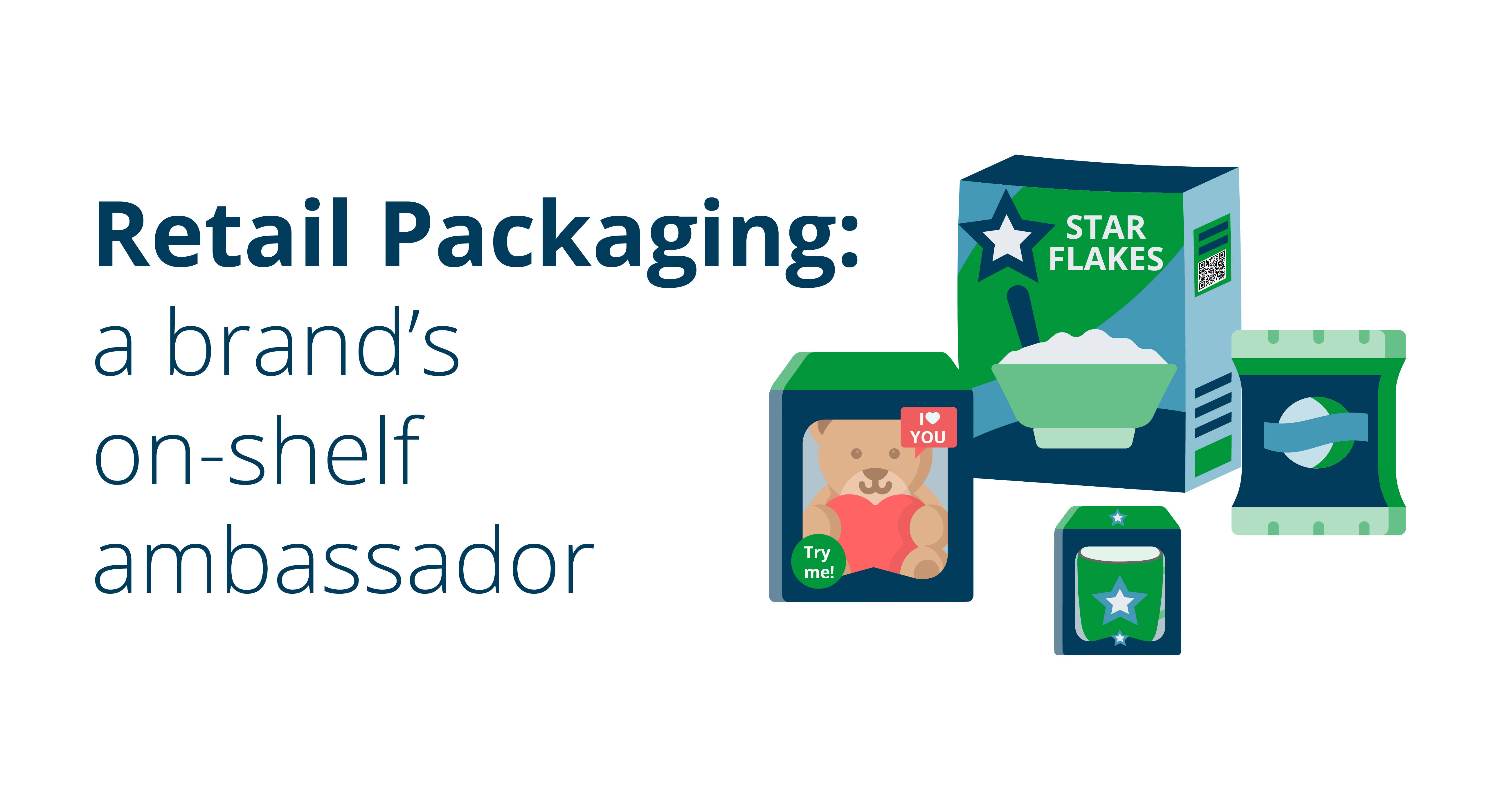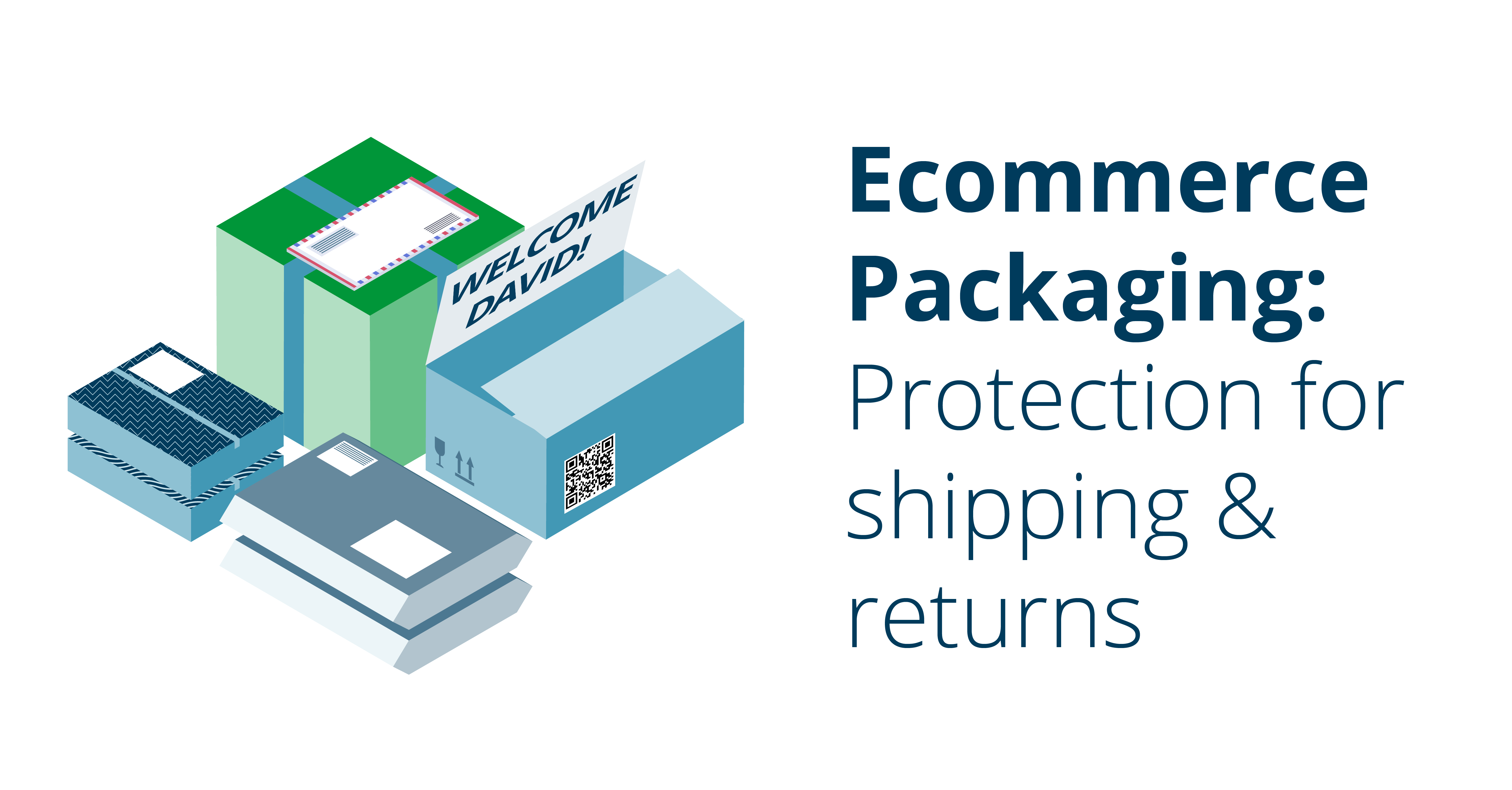Whether on the shelves of a brick-and-mortar store or delivered directly to the home via ecommerce, a product’s packaging will significantly influence consumer perception of a brand, but it’s also a practical tool, with very different functions depending on how a product is sold.
In this blog, we will compare packaging for retail and ecommerce to understand the distinct strategies and requirements that each must employ and provide some insight into the benefits of variable 2D codes for all packaging types.

Retail packaging
The in-store experience: Packaging is a brand’s visual ambassador in brick-and-mortar retail. Vibrant colors, captivating graphics, and strategic placement on store shelves help to catch consumers’ eyes amid a sea of competing products and entice them to pick up items for a closer look. Brands may include special packaging features to help consumers experience a product before purchasing, such as:
- ‘try me’ buttons on toys and electronics;
- clear plastic windows to show the product beyond the packaging;
- die-cut holes for sensory interaction – e.g., for candles or soft furnishings.
Protection: Retail packaging may offer limited protection during the product’s journey from manufacturer to store. The assumption is that the product will not undergo significant stress or handling before reaching the end consumer. The trade-off between visibility and protection is a distinctive feature of retail packaging. During transport, retail packaging will typically be packaged inside secondary packaging, including corrugated boxes, cartons, cases, and trays
Shelf-ready packaging: Retail packaging is often designed with shelf space in mind, adhering to standardised shapes and dimensions to ensure a uniform and visually appealing display. Restrictions on labeling space can make striking a balance between compulsory labeling and design elements a significant challenge for brands.

Ecommerce packaging
The online experience: In ecommerce, the virtual storefront, rather than the product packaging, is the first point of interaction with the consumer. Clean, high-quality images and concise product descriptions replace the physical allure of retail shelves, shaping the customer’s expectations and enticing them to click ‘buy’.
Variable sizing: Unlike the standardised world of retail, ecommerce packaging is more likely to be adapted to suit the size and shape of different products. With massive costs involved in shipping and returns, brands must strike a balance between minimising packaging material to reduce waste and ensuring that each item is adequately protected during the journey from warehouse to doorstep.
Protection: Ecommerce packaging must withstand the rigours of shipping and protect the product from potential damage. The focus is not just on presentation but on ensuring the product arrives in pristine condition, regardless of the journey’s complexity – DHL suggests that in ecommerce, a product may be handled up to 20 times more than in traditional retail settings[i].
Unboxing: In ecommerce, brands can tailor the packaging experience, making it more memorable for the end consumer, encouraging repeat sales and advocacy. In a crowded digital marketplace, a unique unboxing experience can help a brand stand out, adding a human touch to an otherwise transactional process and making the customer feel seen and appreciated.
Opportunities for variable 2D codes
Two-dimensional barcodes equipped with variable data, such as the GS1 Digital Link, are growing in popularity in both retail and ecommerce settings. In both settings, such codes offer a space-efficient solution to provide more information for consumers and supply chain partners and provide visibility of products moving through supply chains.
But this just scratches the surface of what’s possible – by equipping products and packaging with GS1 Digital Link enabled 2D codes, brands can allow consumers, retailers, and anyone involved in the wider supply chain to access an array of instantly updatable, brand-controlled product information, relating to:
- Returns, refunds, and reordering
- Feedback, reviews, and social sharing
- Promotions and discounts
- Product authentication
- Marketing and gamification
- Accessibility and inclusion
- Warranty registration
In addition, providing information to consumers via variable GS1 Digital Link enabled codes can allow brands to obtain information back from consumers, helping to forge relationships, and gain insights into product usage.
Embrace variable data instore and online
In the modern marketplace, brands will strategically utilise both retail and ecommerce packaging, capitalising on the strengths of each to ensure that packaging leaves a lasting impression, whether consumers are browsing aisles or unboxing a product in the comfort of their own home.
As a global coding and marking provider, Domino understands the complexities involved in designing packaging that resonates for both retail and ecommerce platforms and can provide valuable insight into how brands can create additional value by adding variable data coding with 2D codes on their product packaging.
Please get in touch to find out more.
[i] DHL, no date. https://www.dhl.com/content/dam/dhl/global/core/documents/pdf/glo-core-rethinking-packaging-trend-report.pdf, accessed on 3rd January 2024.